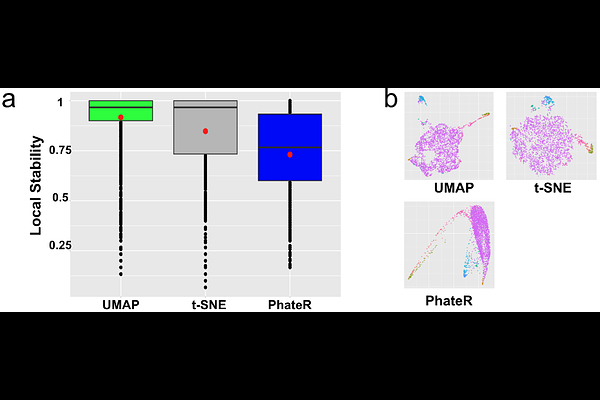Uncovering smooth structures in single-cell data with PCS-guided neighbor embeddings

Uncovering smooth structures in single-cell data with PCS-guided neighbor embeddings
Ma, R.; Li, X.; Hu, J.; Yu, B.
AbstractSingle-cell sequencing is revolutionizing biology by enabling detailed investigations of cell-state transitions. Many biological processes unfold along continuous trajectories, yet it remains challenging to extract smooth, low-dimensional representations from inherently noisy, high-dimensional single-cell data. Neighbor embedding (NE) algorithms, such as t-SNE and UMAP, are widely used to embed high-dimensional single-cell data into low dimensions. But they often introduce undesirable distortions, resulting in misleading interpretations. Existing evaluation methods for NE algorithms primarily focus on separating discrete cell types rather than capturing continuous cell-state transitions, while dynamic modeling approaches rely on strong assumptions about cellular processes and specialized data. To address these challenges, we build on the Predictability--Computability--Stability (PCS) framework for reliable and reproducible data-driven discoveries. First, we systematically evaluate popular NE algorithms through empirical analysis, simulation, and theory, and reveal their key shortcomings such as artifacts and instability. We then introduce NESS, a principled and interpretable machine learning approach to improve NE representations by leveraging algorithmic stability and to enable robust inference of smooth biological structures. NESS offers useful concepts, quantitative stability metrics, and efficient computational workflows to uncover developmental trajectories and cell-state transitions in single-cell data. Finally, we apply NESS to six single-cell datasets, including those about pluripotent stem cell differentiation, organoid development, and multiple tissue-specific lineage trajectories. Across these diverse contexts, NESS consistently yields useful and verifiable biological insights, such as identification of transitional and stable cell states and quantification of transcriptional dynamics during development. Notably, NESS resolves distinct neuronal subpopulations during embryoid formation and provides a deeper understanding of their cell-state dynamics.